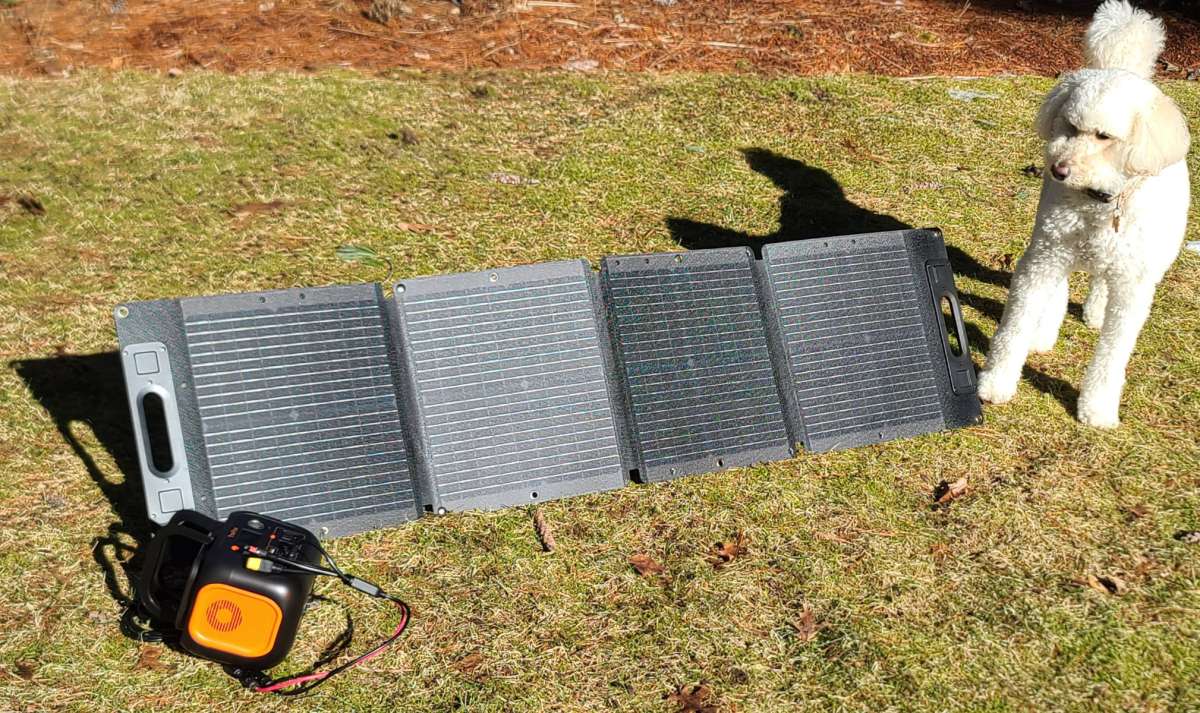
REVIEW – The prevalence of rechargeable items, rechargeable batteries, and power banks has revolutionized life off the grid. But what to do when you’re out of juice? It’s time to set up your panels and refill that battery. I have a Rophie 100W Portable Solar Panel to review. Read on to see what I think!
What is it?
The Rophie 100W Portable Solar Panel is a gadget that you can use to charge rechargeable devices by converting solar energy into electricity. The solar panel generates power when it is exposed to direct sunlight. The power generated by the solar cells is delivered to a pair of MC4 contacts, male and female, so that the panels may be used with accessories that support this connector. The Rophie Solar Panel also comes with an MC4 to six-way connector adapter. The adapter includes an Andeson Power, XT60, and male barrel plugs for DC 7.9 x 0.9 mm, DC 6.5 x 3.0 mm, DC 3.5 x 1.35 mm, and DC 5.5 x 2.1 mm. This variety of connectors ensures that the solar panels can be connected to most portable power stations.
What’s in the box?
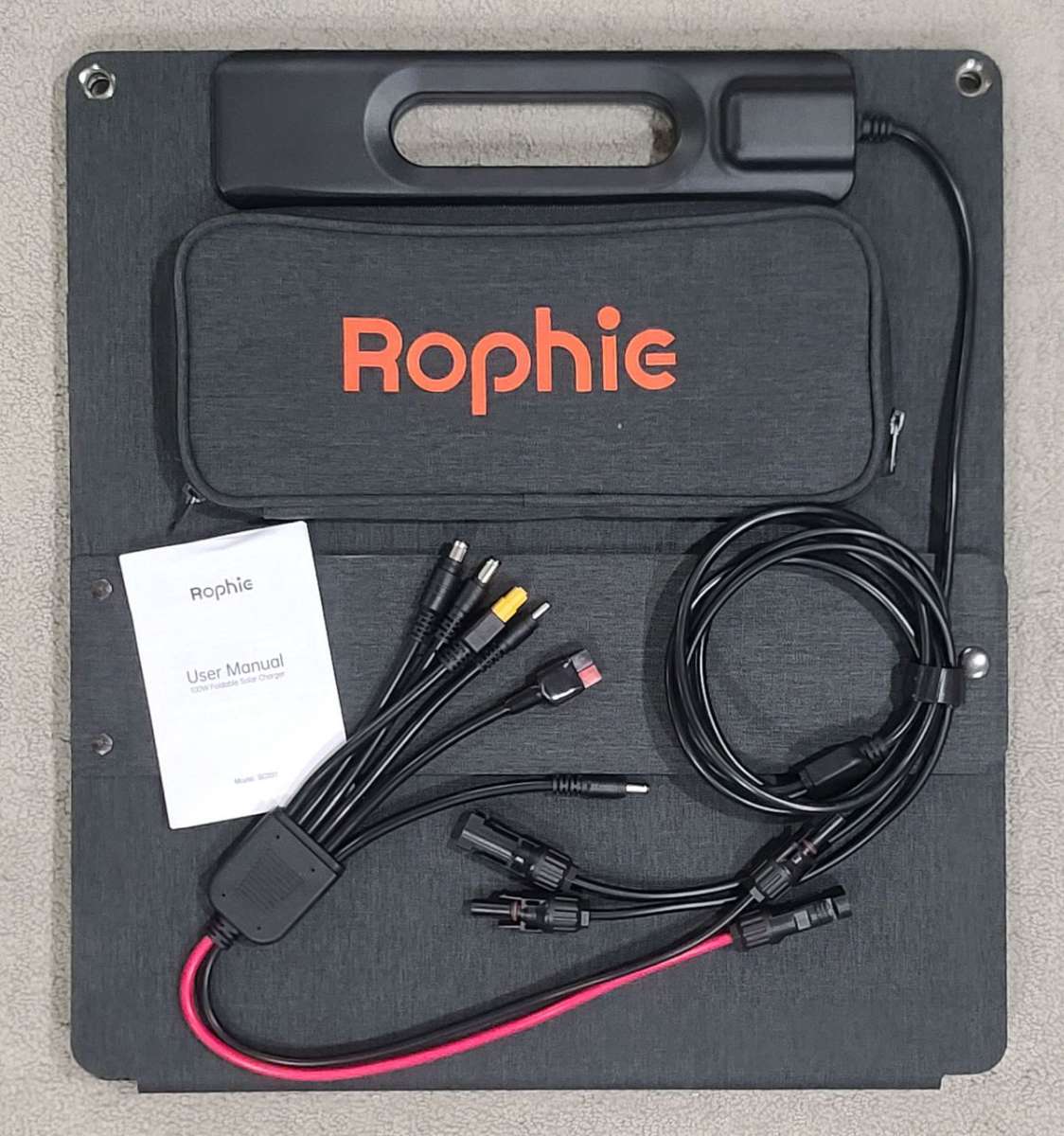 Rophie 100W foldable solar panel with adjustable kickstand
Rophie 100W foldable solar panel with adjustable kickstand- MC4 to XT60/Anderson/DC7909/DC5521/DC6530+DC35135
- User Manual.
Design and features
Specifications
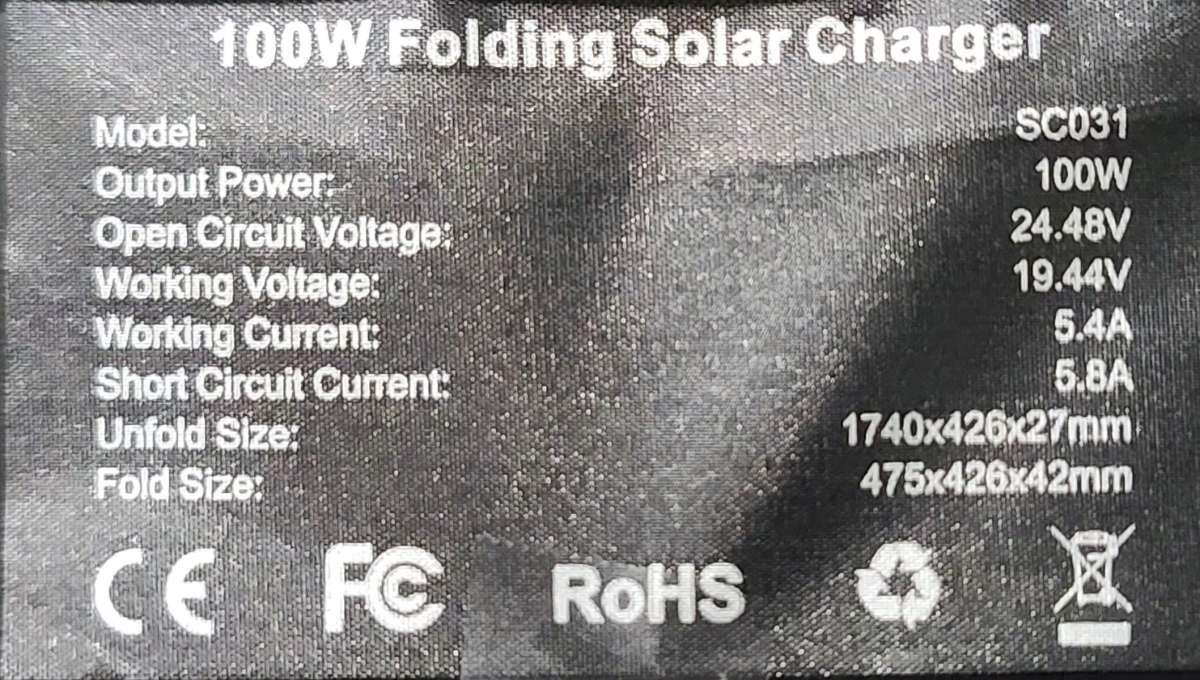
- Material: Monocrystalline Silicon
- Item Weight: 6.6 lbs (3 kg)
- Efficiency: High Efficiency up to 24%
- Connector Type: MC4
- Open Circuit Voltage: 24.48 Volts
- Working Voltage: 19.44 Volts
- Working Current: 5.4 A
- Short Circuit Current 5.8 A
- Maximum Power: 100 Watts
- Item Weight: 6.6 pounds
- Open Product Dimensions 68.5 x 1.1 x 16.8 inches (426 x 27 x 1740 mm)
- Closed Product Dimensions 18.7 x 1.65 x 16.8 inches (426 x 42 x 475 mm)
- Country of Origin: China
- Item model number: SC031
Unboxing
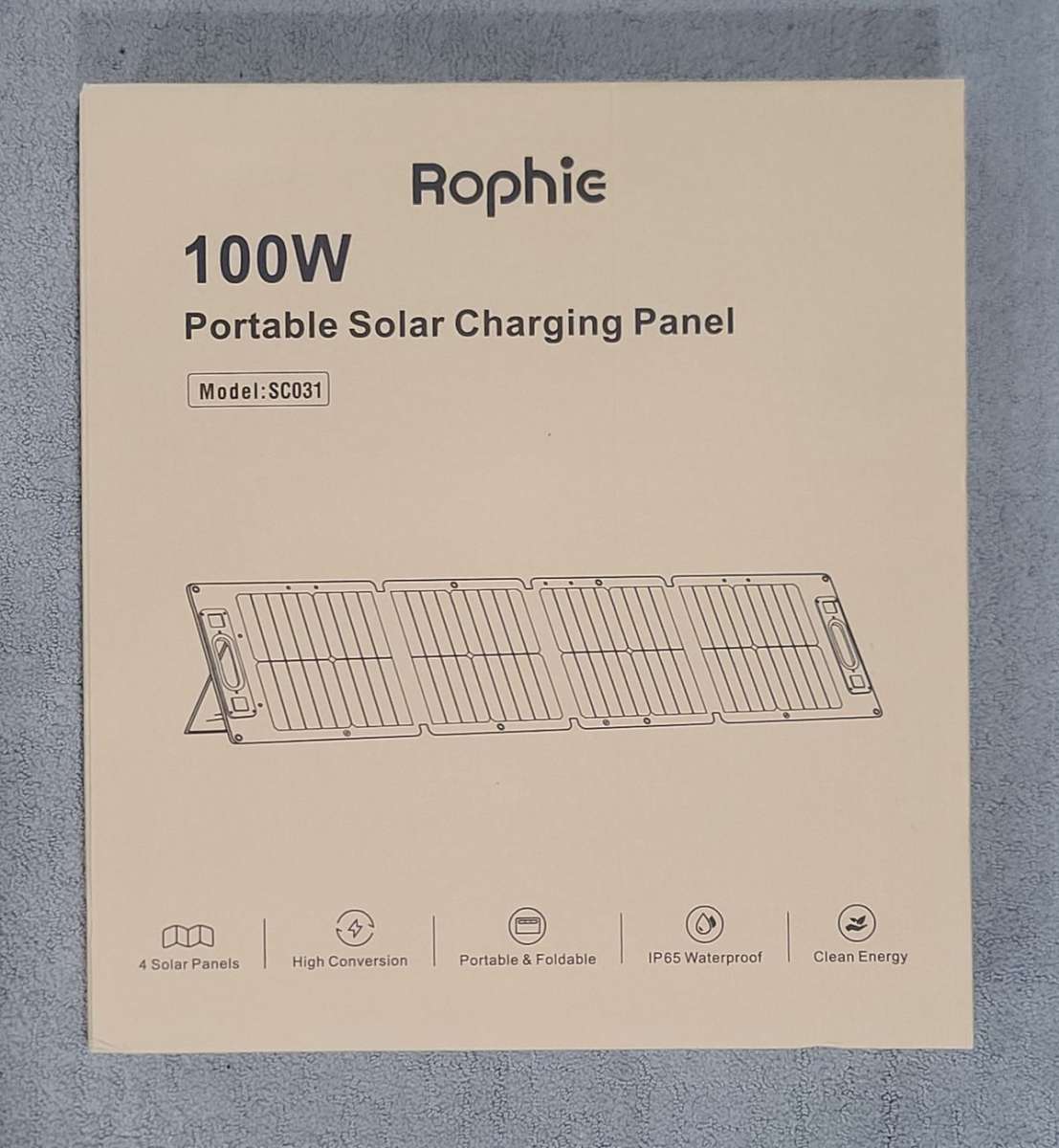
The Rophie 100W Portable Solar Panel comes in a no-frills cardboard box. The front is printed with a picture of the solar panels open and bullet points of the top features.
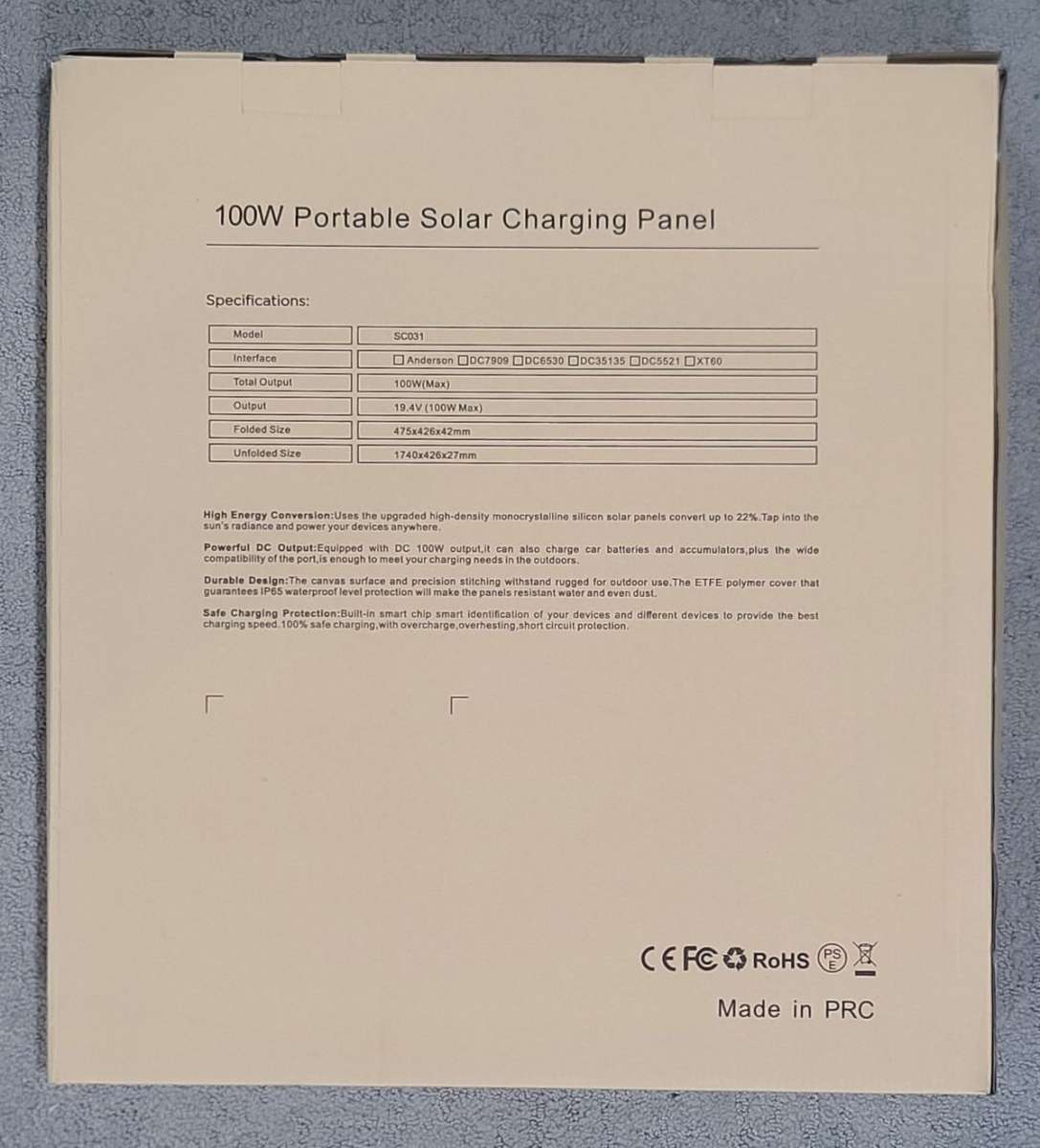
The Back is printed with the specifications.
Design
The Rophie 100W Portable Solar Panel is a folding solar panel design. When the panels are stowed the unit is almost a square 17″ and resembles the shape of a pizza box. Carrying and holding the panels is easy thanks to the built-in plastic handle.
Stowing the panels is almost as easy as carrying them thanks to the built-in magnetic closure system. Two sets of magnets are used for an extra durable bond. The magnets are set into bump outs and pockets to limit lateral movement when the panels are closed. When the panels are closed the inside panels
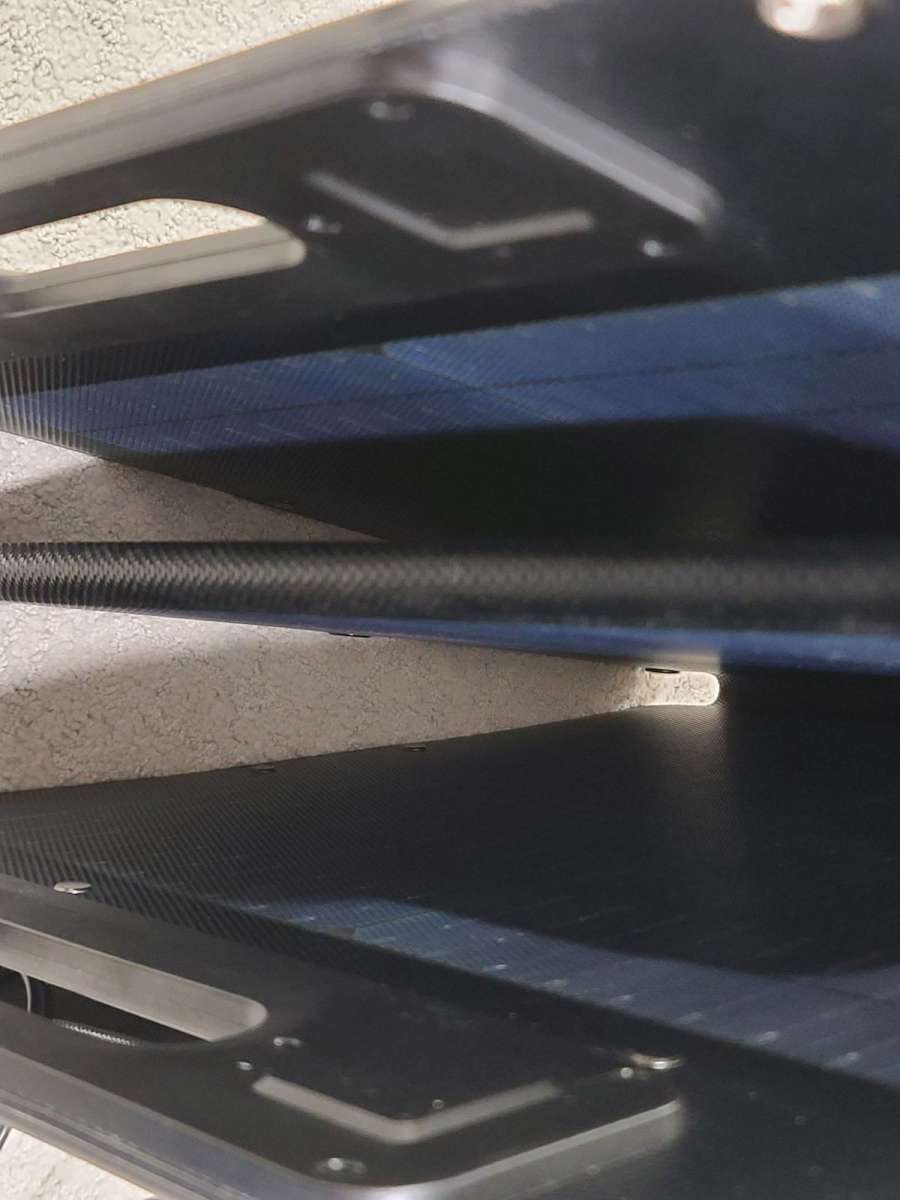
The black plastic handles are securely fastened to the side of the panel so it makes an ideal place to include the interface cable. The cable exits the plastic handle casing in a bump out and has a strain relief rubber fitting at the interface.
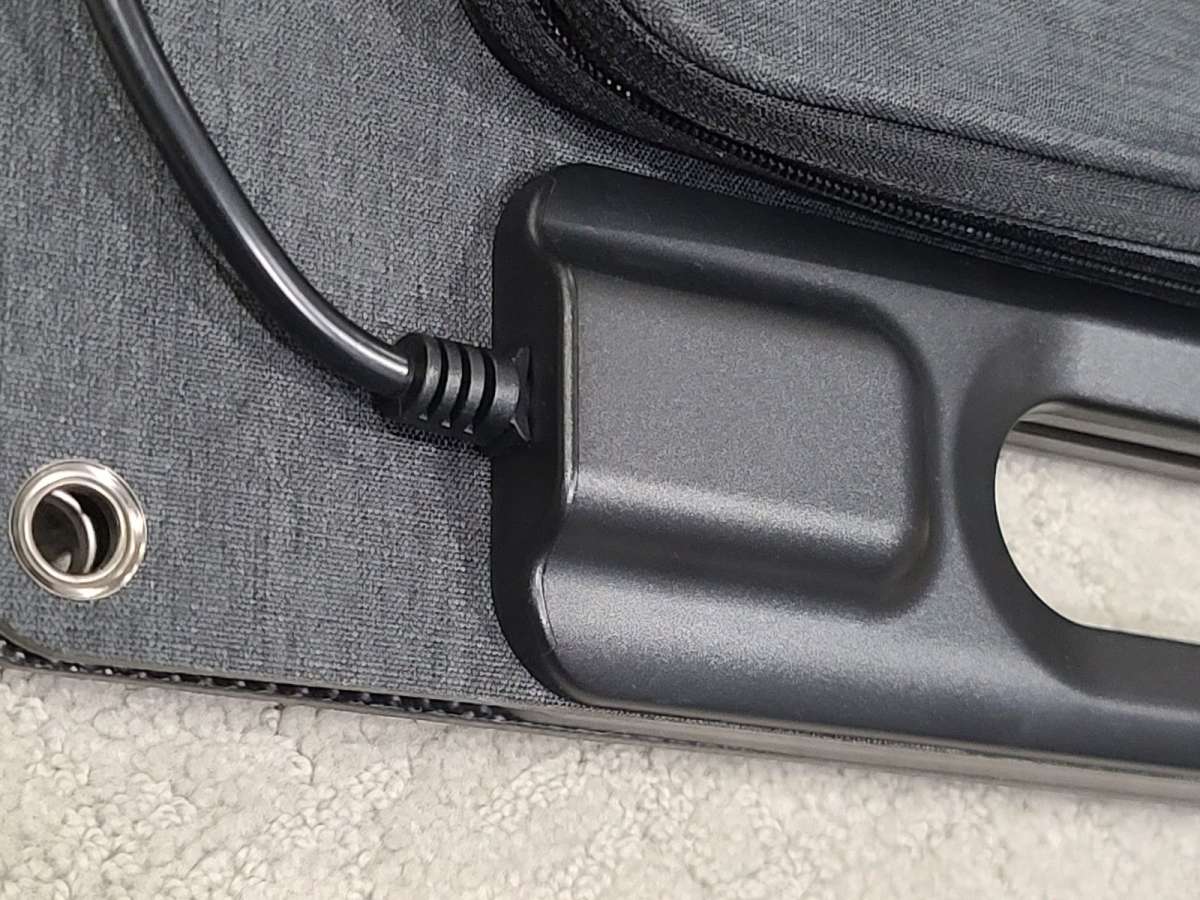
The cable is about 6.5 feet long from the handle to the tip of the MC4 connectors. The MC4 connectors each come from a split in the power cable that is about 20 inches away from the end of each connector. If two panels are set up one in front of the other then they may be wired in series or parallel using the supplied MC4 connectors and additional parallel connectors. The Rophie 100W Portable Solar Panel also comes with a velcro cable tie for managing the 6.5 foot long cable.
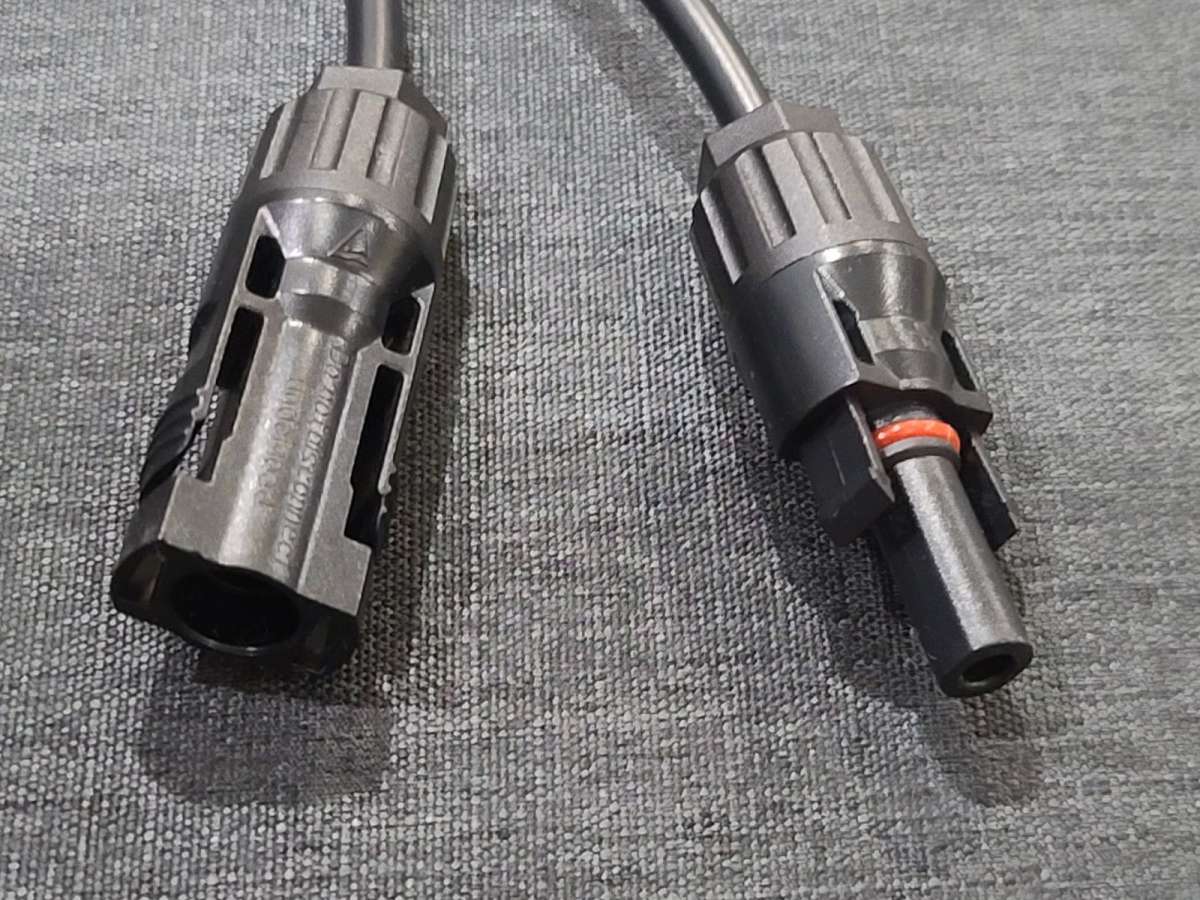
The outside of the solar panels is a laminated nylon that is attractive and cleanable.
The outside of the panels has three distinct features. The panels include a zippered compartment that can hold the cables. The compartment is riveted through the side of the panel with the solar cells for a robust connection.
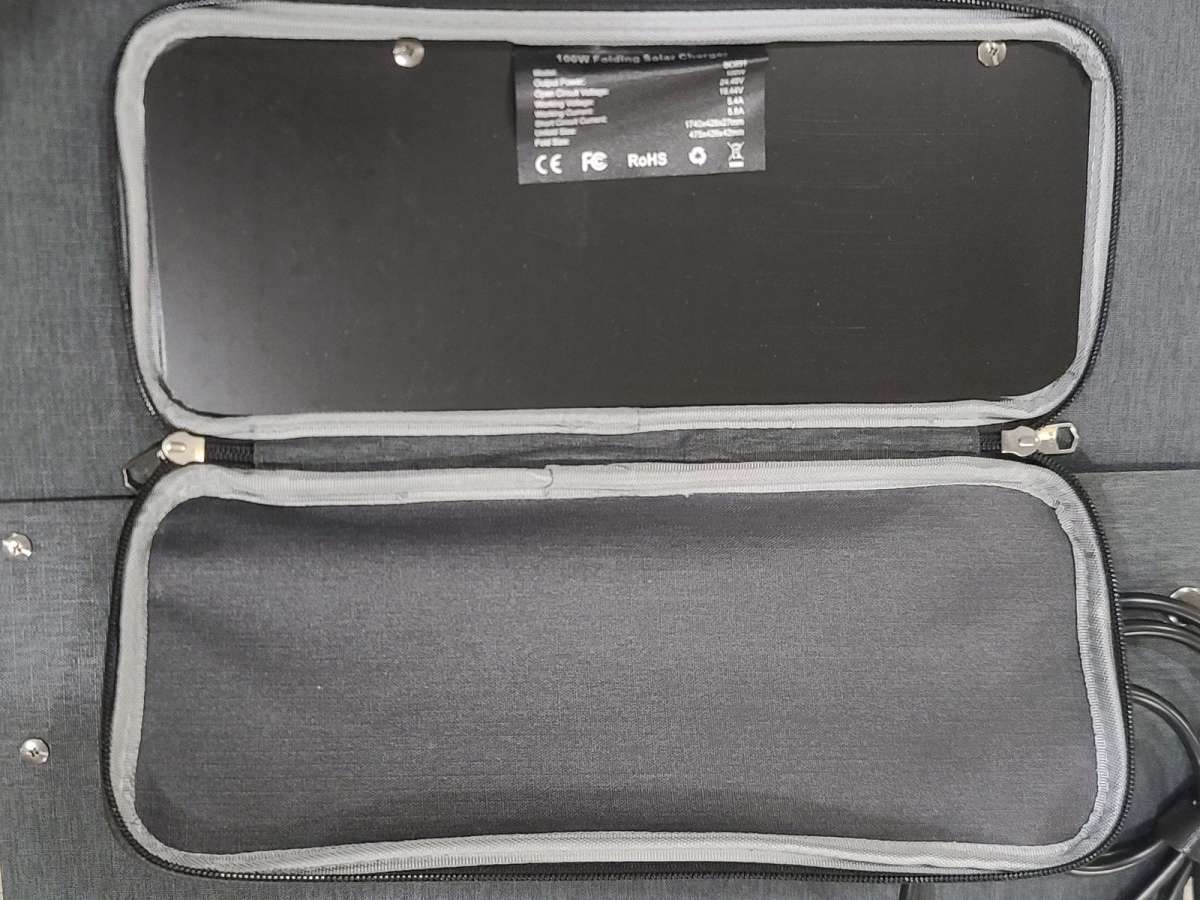
The other two features are the support legs. There is also a third support leg in the middle section. The legs have support straps that prop the panels up at a minimum of 36 degrees. In the summer this is more than the ideal support angle. But in mid-summer it can always be supported with small items to prop it up at a shallow angle.
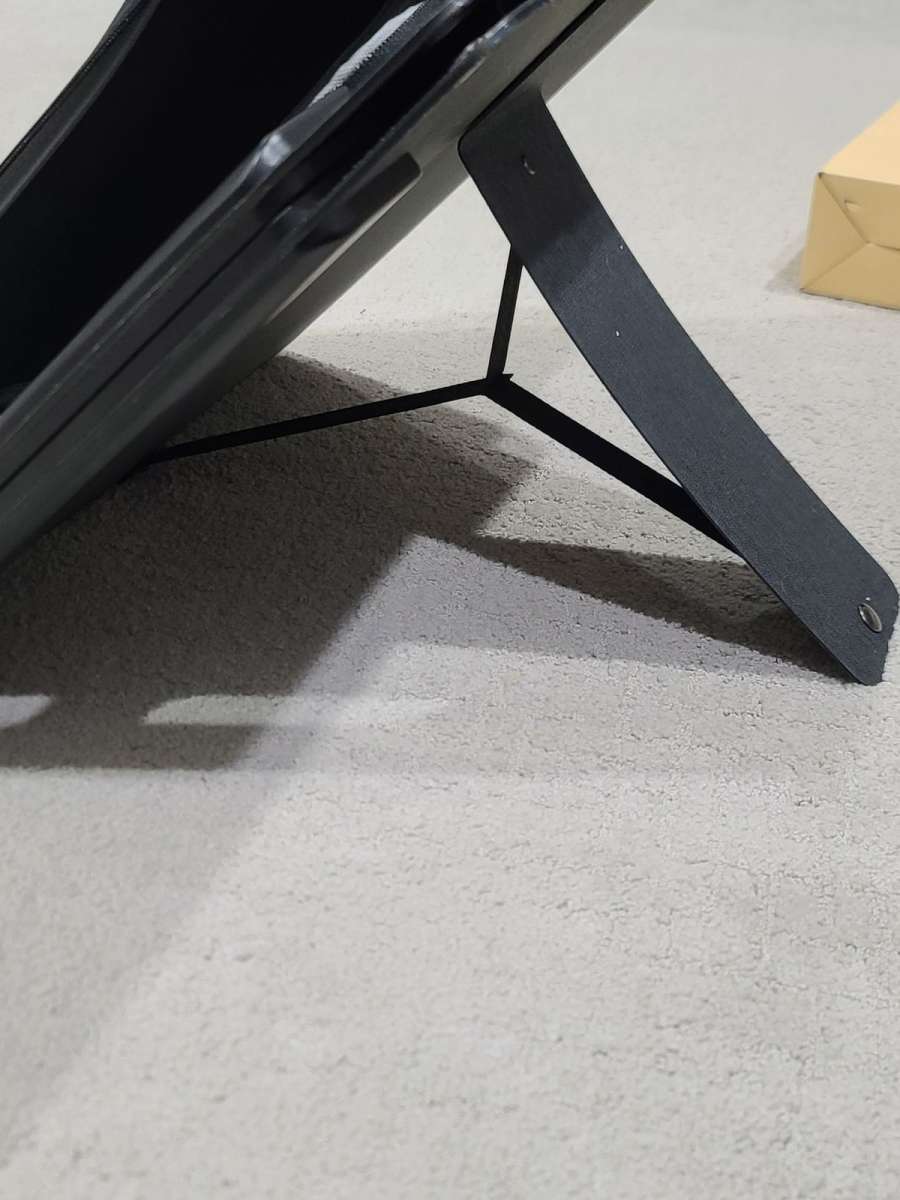
In the winter the support can be partially extended to raise the angle for optimal solar radiation. The optimal angle can be determined by this chart.
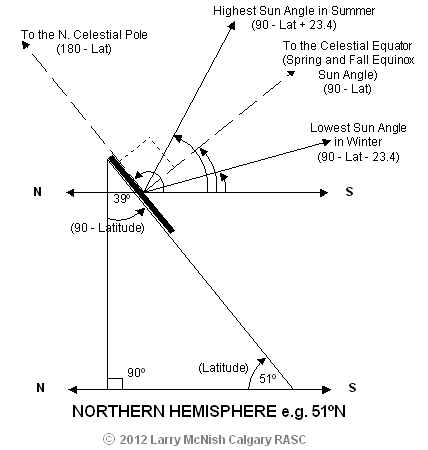
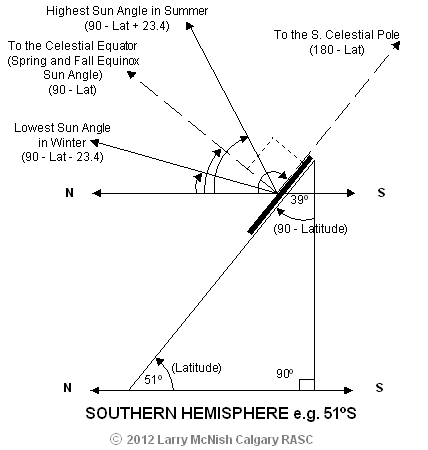
The Suaoki 14W portable solar charge panel I reviewed came with a locking stand that can be used to set the angle of the unit. The sun finder is located at the lower front of the easel. A clear plastic window with a small painted dot in its center sits about a quarter inch above a white target with black crosshairs. When the shadow of the painted dot is in the center of the crosshairs the solar panels are perpendicular to the sun. This is an important consideration since the power efficiency drops as the angle the panel makes with the sun changes from perpendicular to parallel. If the Rophie 100W Portable Solar Panel came with one of these that could be attached to the front of the panel it would be very useful.

When the unit is opened, the inside appears to be coated with fiberglass; the surface has the texture of a cast woven mat.
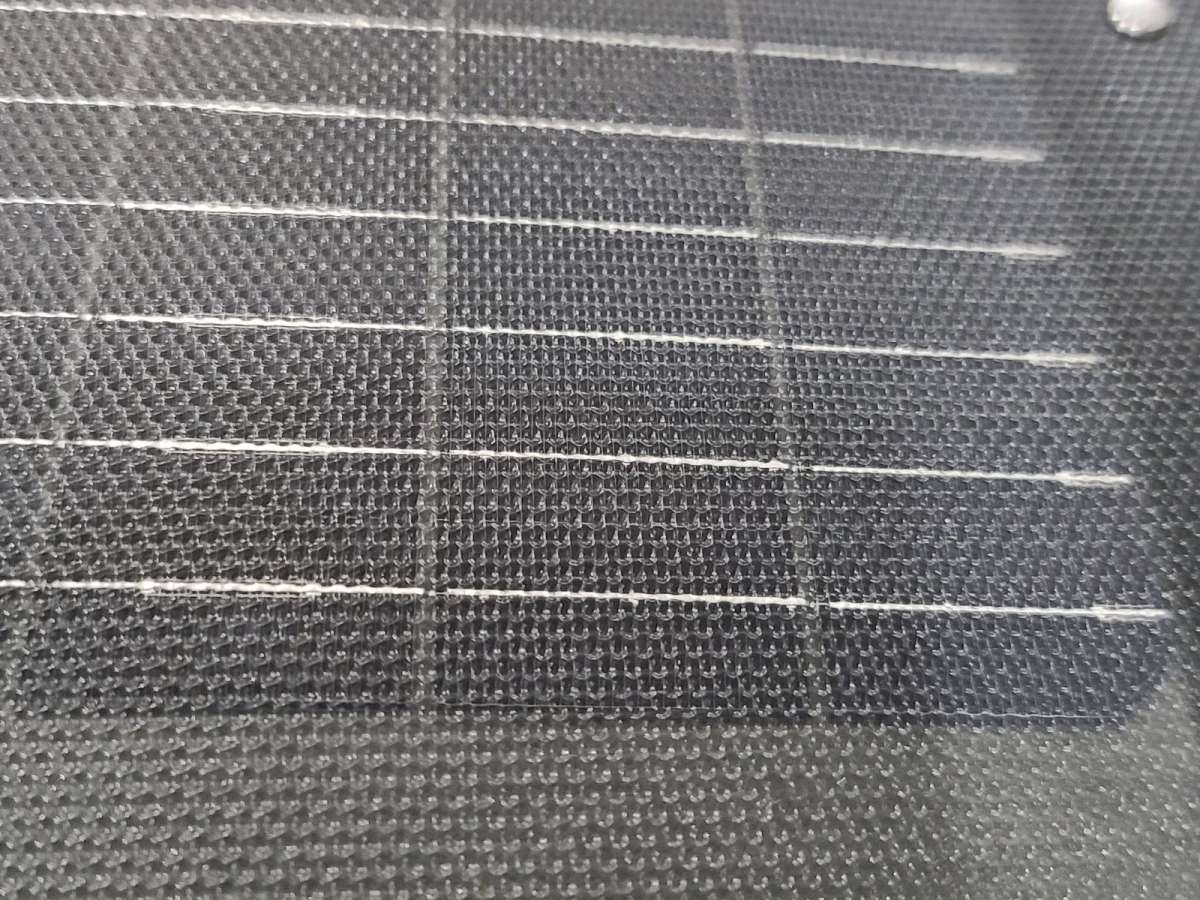
However, that surface is ETFE, which is a lot more resilient than fiberglass, especially when it comes to high temperatures, UV, and salts, which are all things the panel may be exposed to, especially if used on the beach.
The solar panels are flexible, which is an improvement to panels that have cells made of glass. The panels are unaffected by being bent, although they cannot be fully creased. The thin film that the cells are manufactured from must contribute to the low weight of the unit. The 7.7 lb weight of the unit is about half of some competitor models, such as those sold by Yoshino and Wetown.
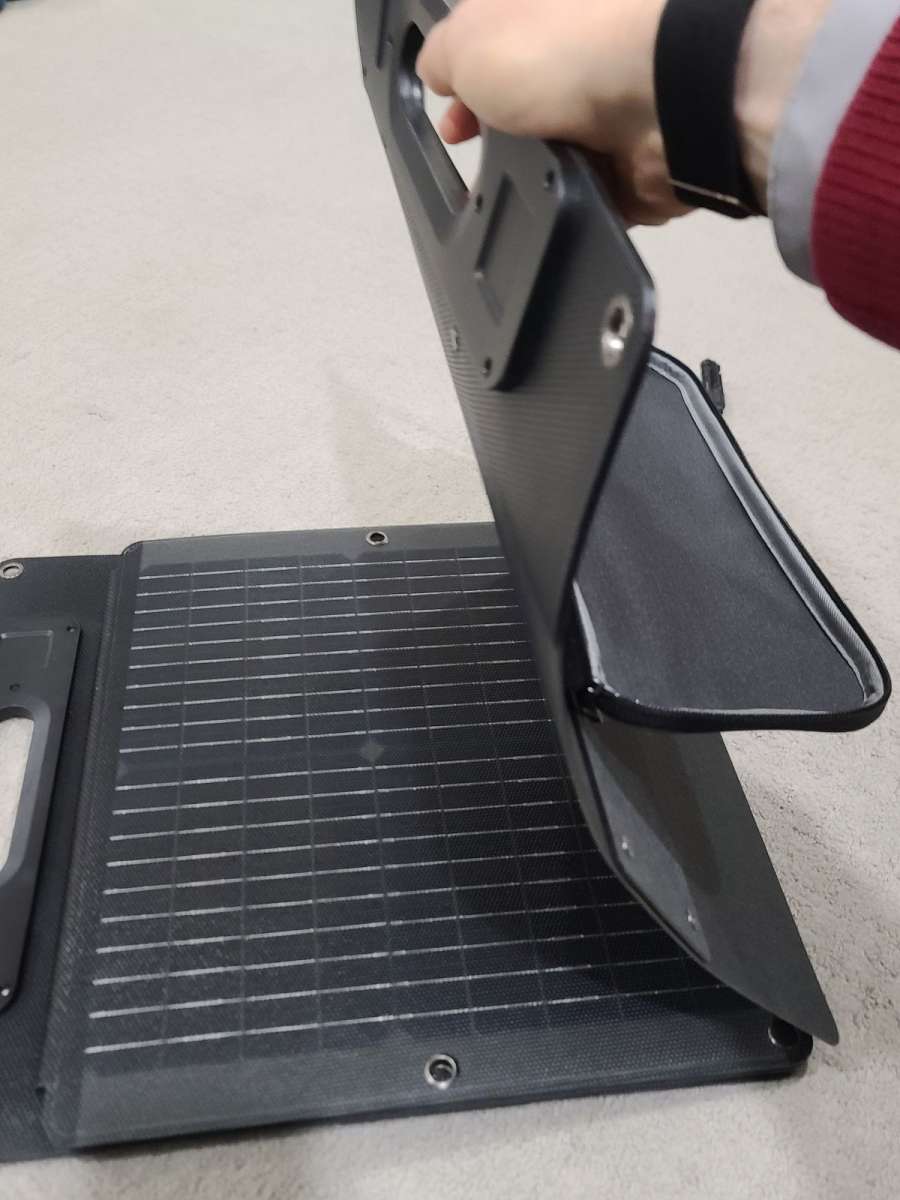
The manufacturer states that the electronics and plastic coating give this gadget an IP67 rating. Per the International Protection marking, the first digit of IP67 (6), is the highest level of protection against solid ingress, such as windblown dirt and other airborne solid materials that are invisible to the naked eye. Combined with their high-level water-ingress protection indicated by the second digit (7), IP67-rated enclosures can withstand water and jet sprays and can sustain momentary water immersion in depths up to 1 m for 30 minutes maximum. This seems a little far-fetched. The back of the box states an IP65 rating and I think that is much more reasonable/practical for these panels.
There are eight eyeholes around the perimeter of the unit. These can be used along with ropes and carabiners to mount the gadget just about anywhere the sun will hit it.
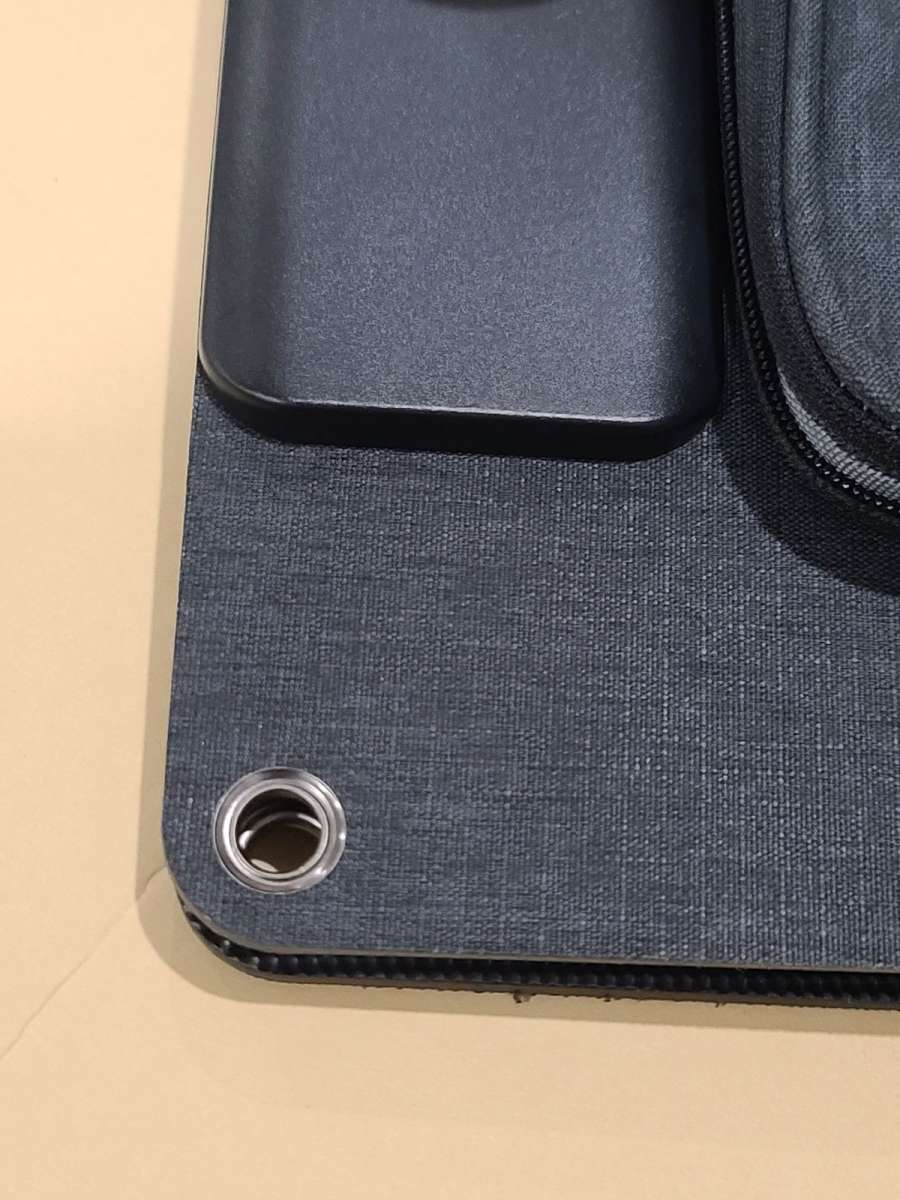
The manufacturer states that the conversion rate for the panel is up to 24%, which is close to the maximum conversion of 26.8%, and high efficiency compared to the maximum conversion for competing technologies. This means that based on a cross-section of all technologies currently available, this panel is one of the most efficient.
Operation
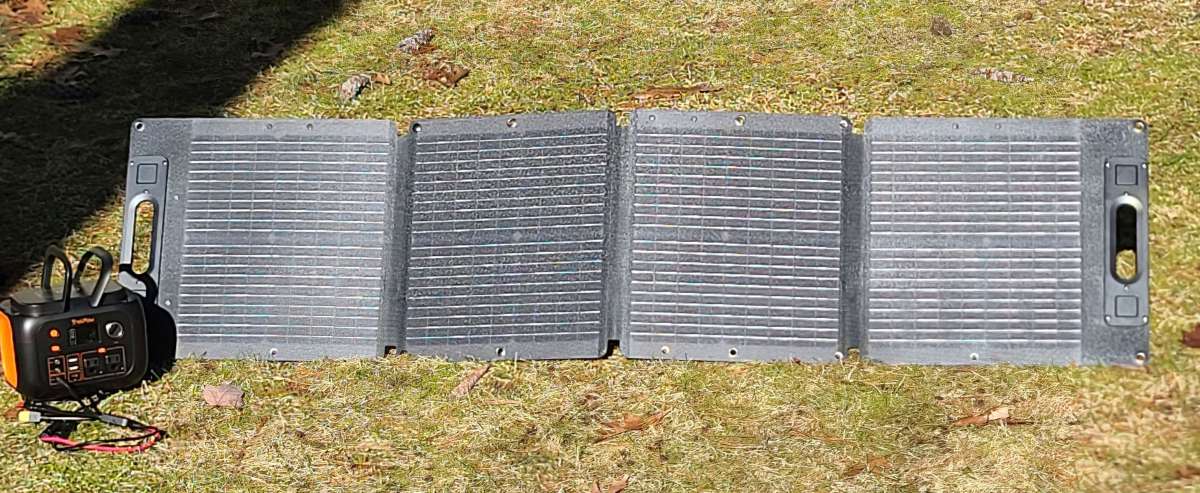
To use one of these solar panels requires a power bank or a device that will accept the MC4 connectors. Because of fluctuations in solar power, caused by clouds or shadows, using this to power electronics directly is not very practicable. Using the Rophie 100W portable solar panel with my TrekPow portable 80000mAh AC/DC power station is a breeze. I just plugged the barrel adapter into the TrekPow and it started charging.
Some competitors have a current/voltage/watt meter. While this feature is nice, it will not help get a full charge on your equipment.
Performance
I used the Rophie 100W portable solar panel with my TrekPow portable 80000mAh AC/DC power station. On a couple of bright cloudless winter days, I was able to achieve 61.6 W and 57.5 watts.
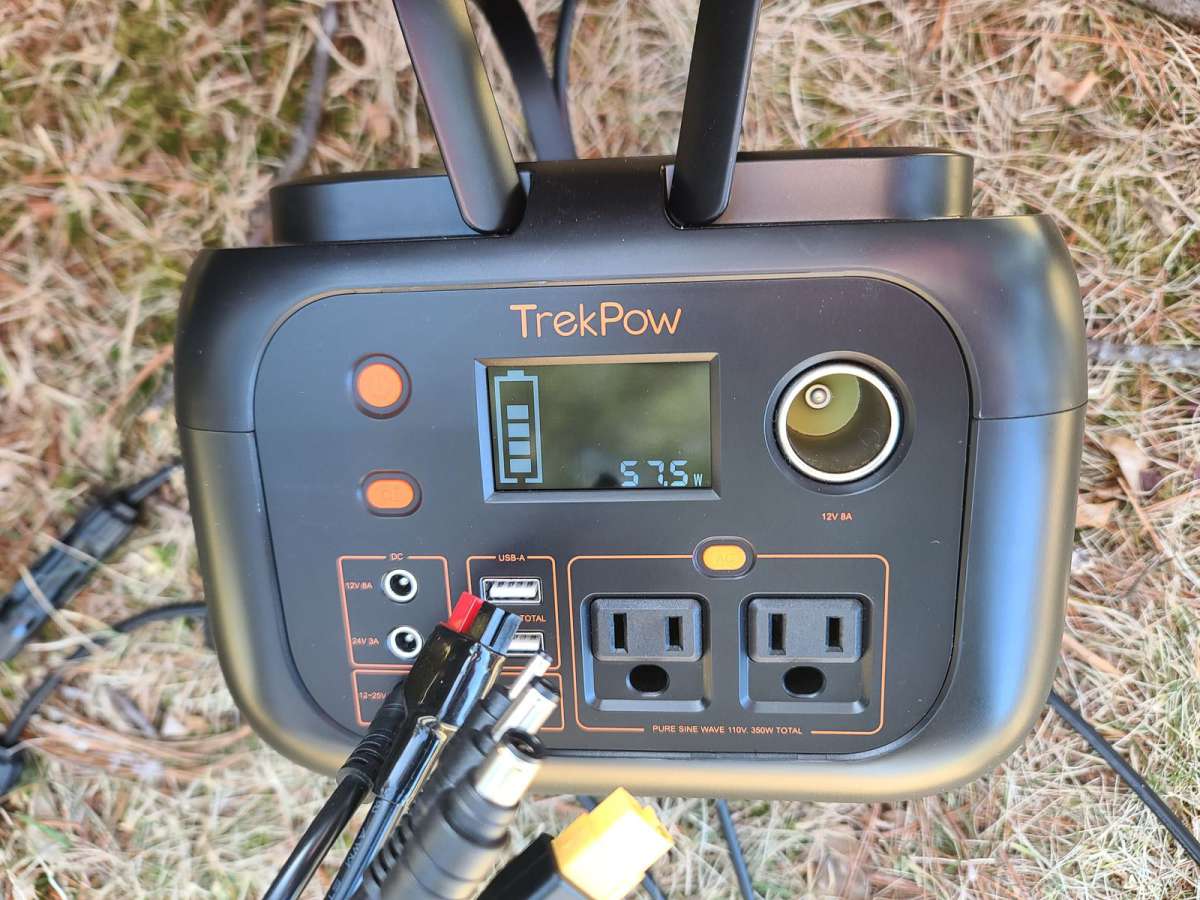
While this measurement is less than 100 W the TrekPow current draw is only 3.42 A so 61.6 W is close t0 93% of the theoretical max the TrekPow will register. I also measured the open circuit voltage at 24.3 volts. These two measurements tell me that the panel operates according to the specifications.
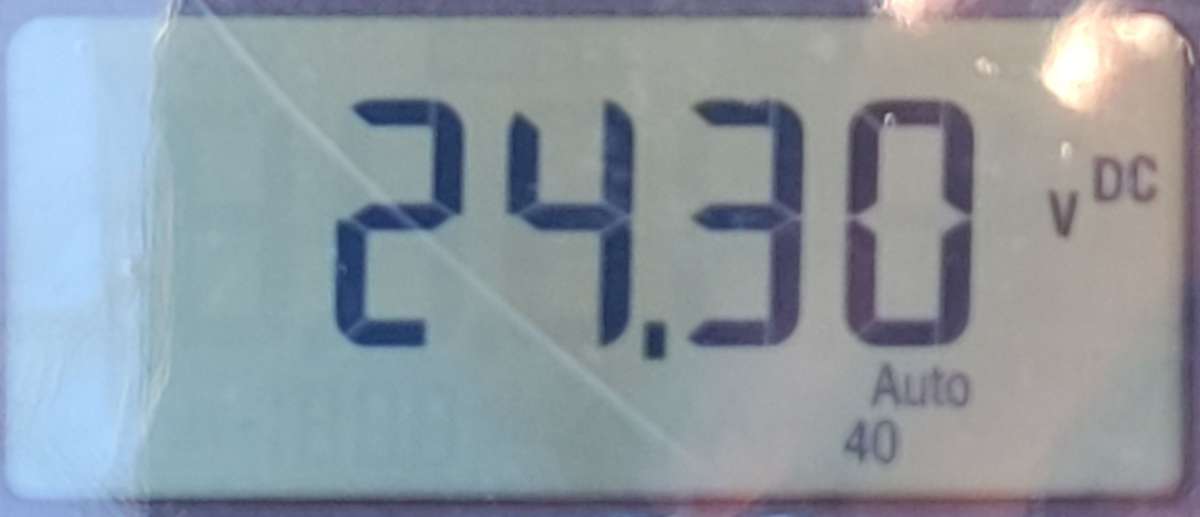
These measurements were made on a bright, sunny, cloudless, day with a bit of haze so maybe on a more clear day the measurements could be better. One advantage I had is that the cells perform better in the cold.

What I like about this product
- Easy to use
- Many mounting options
- Efficient
What needs to be improved
- Alignment device
Final thoughts
The Rophie 100W Portable Solar Panel is a great option to keep your gear going off the grid. Using this along with a well-performing power station will permit you to always make sure your power reserves are topped off.
Price: $169.99 to $229.99
Where to buy: Amazon and Rophie
Source: The sample for this review was provided by Rophie.


